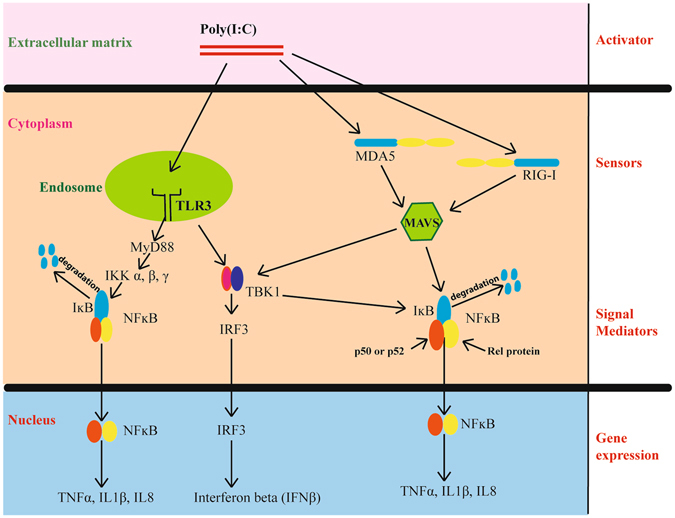Figure 1.

Schematic representation of detection of double-stranded RNA in a human cell and activation of the innate immune response. RNA viruses during replication produce double-stranded RNA intermediates (PAMPs), which are detected by cellular receptors (PRRs). Poly(I:C) is a known double-stranded RNA analogue (activator) which is detected by sensors such as TLR3 (black), RIGI and MDA5 (blue, CARD domains in yellow) in a cell. These sensors, when stimulated by the activator, lead to the expression of interferons (IFNβ) and inflammatory genes (TNFα, IL1β, IL8) through adaptor proteins (MAVS and MyD88) and signal mediators such as NFκB (orange and yellow subunits) and IRF3. NFκB is retained in an inactive state in the cytoplasm by inhibitory molecules such as IκB (blue). Upon receiving an activation signal via a sensor, kinases (TBK1) phosphorylate IRF3, which then translocates to the nucleus to activate transcription. Kinases, such as IKK α, β or γ phosphorylate IκB inhibitors and mark them for degradation, thereby activating NFκB. Active NFκB then causes expression of downstream genes by translocating to the nucleus.
